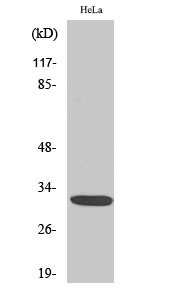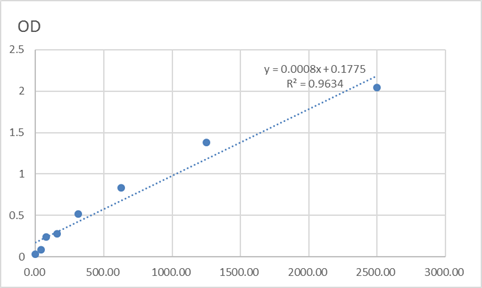Total Dlx-5 Cell-Based Colorimetric ELISA Kit
- Catalog No.:KA3650C
- Applications:ELISA
- Reactivity:Human;Mouse;Rat
- Gene Name:
- DLX5
- Human Gene Id:
- 1749
- Human Swiss Prot No:
- P56178
- Mouse Swiss Prot No:
- P70396
- Rat Swiss Prot No:
- P50575
- Storage Stability:
- 2-8°C/6 months
- Other Name:
- Homeobox protein DLX-5
- Detection Method:
- Colorimetric
- Background:
- developmental stage:First expressed in embryos at 8.5-9 days in facial and branchial arch mesenchyme, otic vesicles and frontonasal ectoderm around olfactory placodes, a day later expression is seen in the developing forebrain in primordia of the ganglionic eminence and ventral diencephalic regions. In day 12.5 embryos, expressed in the brain and bones, and also in all skeletal structures of midgestation embryos after the first cartilage formation. Expression remains unaltered in both brain and skeleton in day 15 embryos and slowly decreases in day 17 embryos.,similarity:Belongs to the distal-less homeobox family.,similarity:Contains 1 homeobox DNA-binding domain.,subunit:Interacts with G22P1 (Ku70).,
- Function:
- cell morphogenesis, cell morphogenesis involved in differentiation, skeletal system development, regulation of transcription, DNA-dependent, axonogenesis, sensory organ development, positive regulation of cell proliferation, cell projection organization, neuron differentiation, regulation of ossification, embryonic limb morphogenesis, epithelial cell differentiation, neuron projection development, cellular component morphogenesis, cell part morphogenesis,appendage morphogenesis, limb morphogenesis, embryonic appendage morphogenesis, regulation of cell proliferation, ear morphogenesis, inner ear morphogenesis, ear development, regulation of transcription, positive regulation of cell differentiation, regulation of osteoblast differentiation, positive regulation of osteoblast differentiation, embryonic organ morphogenesis, embryonic organ development, embryonic morphogenesis, neuron develop
- Subcellular Location:
- Nucleus .
- June 19-2018
- WESTERN IMMUNOBLOTTING PROTOCOL
- June 19-2018
- IMMUNOHISTOCHEMISTRY-PARAFFIN PROTOCOL
- June 19-2018
- IMMUNOFLUORESCENCE PROTOCOL
- September 08-2020
- FLOW-CYTOMEYRT-PROTOCOL
- May 20-2022
- Cell-Based ELISA│解您多样本WB检测之困扰
- July 13-2018
- CELL-BASED-ELISA-PROTOCOL-FOR-ACETYL-PROTEIN
- July 13-2018
- CELL-BASED-ELISA-PROTOCOL-FOR-PHOSPHO-PROTEIN
- July 13-2018
- Antibody-FAQs



